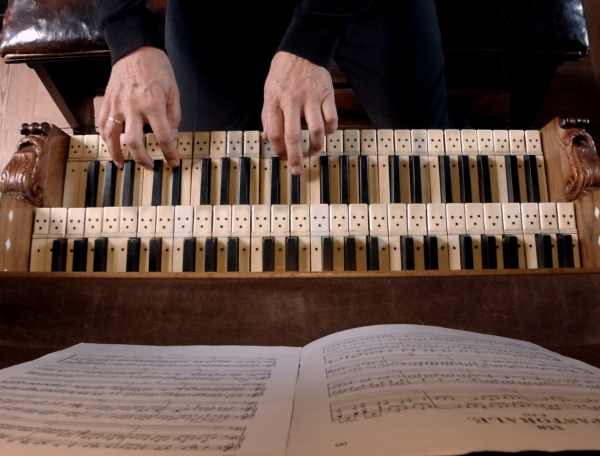

Vor deinen Thron tret ich hiermit
BWV 668 performed by Ton Koopman
Stadtkirche St Wenzel, Naumburg, Germany
Behind the music
Closing chorale with a mythical aura
This organ work corms the conclusion of the ‘Leipziger’ chorale arrangements
BWV 668 is a closing chorale – possibly even the ultimate closing chorale. Entitled Vor deinen Thron tret’ ich hiermit, it is the last of the eighteen ‘Leipziger’ chorale arrangements. Due to Bach’s failing eyesight, the two chorales preceding it, BWV 666 and BWV 667, were copied by his son-in-law Johann Christoph Altnickol. He had become the organist at St Wenzel’s Church in 1749, where he played the organ – brand-new at the time – that Ton Koopman is playing here. These two chorales are followed by the variations on Vom Himmel hoch BWV 769a, and then BWV 668, copied in an unknown hand.
An air of incompleteness surrounds the piece elsewhere as well, as a somewhat different version comes at the end of the first edition of the Kunst der Fuge from 1751, where it bears the title Wenn wir in höchsten Nöten sein. According to the foreword, it was added because Bach had not finished the last fugue in the edition before his death. It is said that the blind Bach dictated the chorale itself “ad lib” (“aus dem Stegereif”) to a friend, although this is unlikely.
The ending of BWV 668 has an unusual timbre, resulting from a last harmonic diversion just before the final chord. But the main reason for the rather mythical aura surrounding BWV 668 is its special place as the conclusion of both the ‘Leipziger’ chorales and the Kunst der Fuge. As early as 1754, the theologian Johann Michael Schmidt cites the piece. Although there may be automatons that make music themselves, he writes, “nobody has yet invented a composing statue, or anything remotely like it”. Bach’s last fugue and particularly the chorale are the best evidence of this: “everything the advocates of materialism might come up with collapses in the face of this one example”.
18 Choräle/Leipziger Choräle, BWV 651-668
In the last ten years of his life, Bach gathered together and completed a series of chorale arrangements, presumably planning to have them published, just like the third part of the Clavier-Übung in 1739. It concerns a selection of his compositions from much earlier years, when he was working as an organist in Weimar, Arnstadt and Mühlhausen. The collection became known as the 18 Choräle or Leipziger Choräle. Incidentally, 18 Choräle is a misleading title, as the set originally comprised 17 pieces. The eighteenth, Vor deinen Thron tret ich (BWV 668), was added to Bach’s manuscript later on.
- BWV
- 668
- Title
- Vor deinen Thron tret ich hiermit
- Instrument
- organ
- Genre
- organ works
- Serie
- 18 Choräle (organ)
Extra videos
Vocal texts
Original
Translation
Credits
-
- Release date
- 26 October 2023
-
- Recording date
- 14 September 2020
-
- Location
- Stadtkirche St Wenzel, Naumburg, Germany
-
- Organist
- Ton Koopman
-
- Organ
- Zacharias Hildebrandt, 1746
-
- Director and editor
- Robin van Erven Dorens
-
- Music recording
- Guido Tichelman, Bastiaan Kuijt
-
- Music edit and mix
- Guido Tichelman
-
- Camera
- Robin van Erven Dorens, Onno van der Wal
-
- Lights
- Ernst-Jan Thieme
-
- Assistant music recording
- Marloes Biermans
-
- Interview
- Robin van Erven Dorens, Marloes Biermans
-
- Producer
- Jessie Verbrugh
Discover
Help us to complete All of Bach
There are still many recordings to be made before the whole of Bach’s oeuvre is online. And we can’t complete the task without the financial support of our patrons. Please help us to complete the musical heritage of Bach, by supporting us with a donation!

